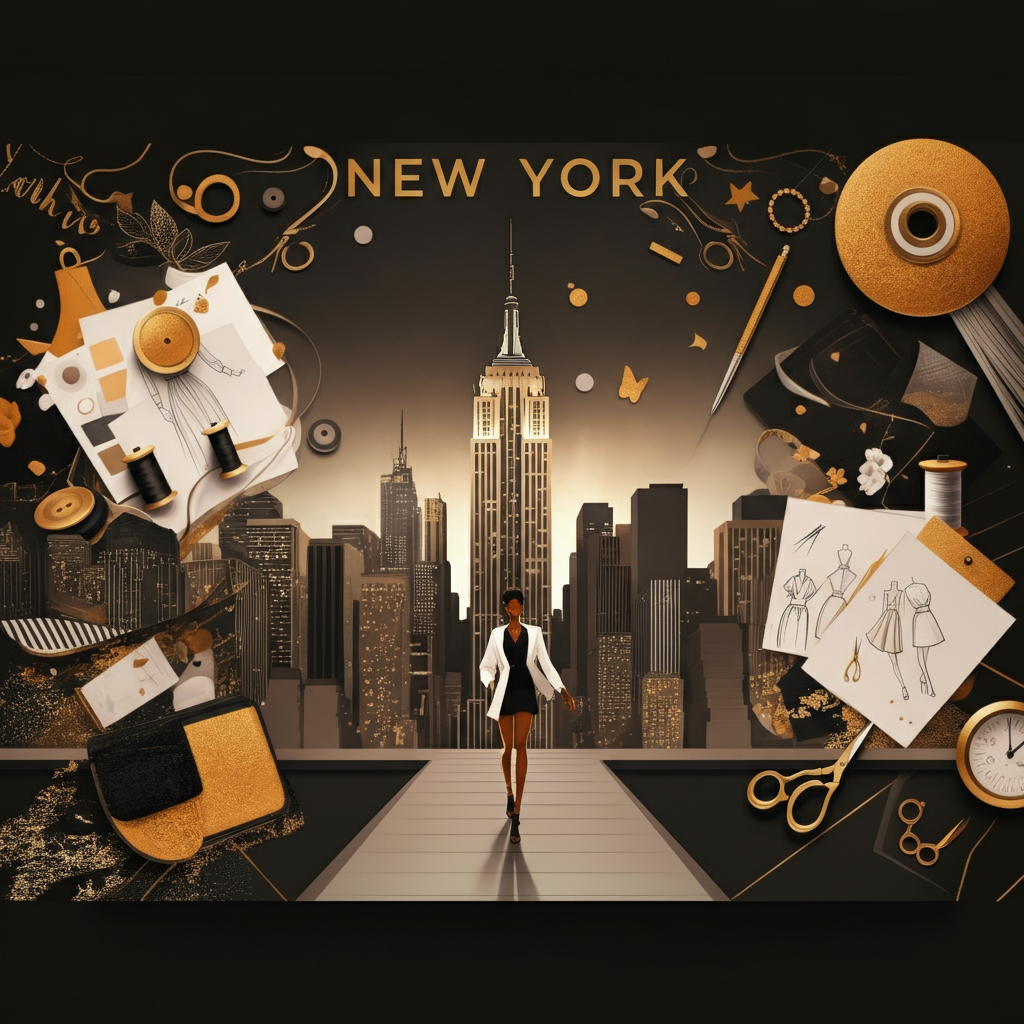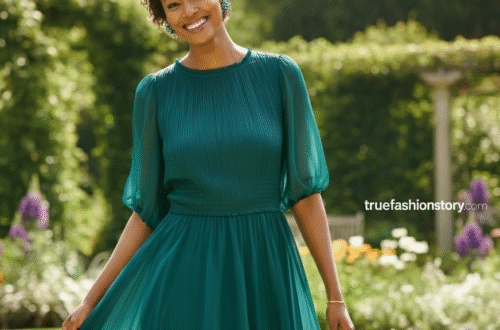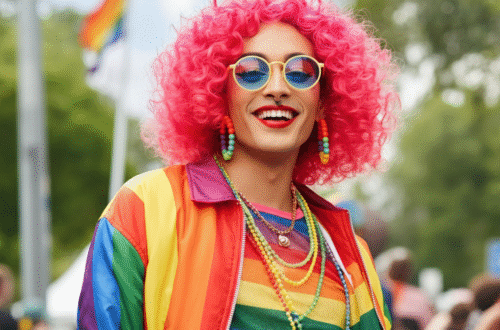New York City pulses with a unique energy, and at its heart is the vibrant, fast-paced world of fashion. For anyone dreaming of a life in style, pursuing one of the many New York fashion careers is the ultimate goal. The city is a global hub where trends are born, legends are made, and creativity knows no bounds. But how do you go from dreaming about Fashion Week to actually working in the industry? This guide will walk you through everything you need to know to launch your career in the fashion capital of the United States.
We’ll explore the different types of jobs available, the skills you need to succeed, and how to get your foot in the door. Whether you’re a budding designer, a marketing whiz, or a merchandising expert, there’s a place for you in NYC’s dynamic fashion scene.
Key Takeaways
- New York City is a global fashion hub offering a wide range of career opportunities, from design and merchandising to media and technology.
- Success in the industry requires a combination of creativity, technical skills, business knowledge, and networking.
- Internships and entry-level positions are crucial for gaining experience and making connections.
- The fashion industry is evolving, with growing opportunities in sustainability, technology, and freelance work.
- Building a strong portfolio and professional network is essential for career advancement.
Why Pursue a Fashion Career in New York?
Choosing to build a career in New York City’s fashion industry is about more than just finding a job; it’s about immersing yourself in the epicenter of American style. The city is home to the headquarters of countless iconic brands, from global luxury houses to innovative indie labels. This concentration of talent and business creates an unparalleled environment for growth and opportunity.
Here, you are surrounded by inspiration at every turn. The street style, the art galleries, the diverse cultures—it all fuels the creative spirit of the fashion world. Major industry events like New York Fashion Week happen right here, giving you front-row access to the latest trends and the chance to network with key players. You’ll also find the nation’s top fashion schools, publications, and PR agencies, creating a complete ecosystem that supports a wide array of New York fashion careers. This environment fosters collaboration and competition, pushing you to be your best and constantly innovate.
The Core Sectors of the NYC Fashion Industry
The fashion industry in New York is vast and multifaceted. It’s not just about designers sketching in a studio. It’s a complex machine with many moving parts, each offering unique career paths. Understanding these core sectors can help you identify where your skills and passions align.
Fashion Design and Development
This is the creative heart of the industry. Professionals in this sector are responsible for conceptualizing and creating the clothing and accessories we see on the runway and in stores.
- Fashion Designer: Creates original clothing, accessories, and footwear. They sketch designs, select fabrics and patterns, and give instructions on how to make the products.
- Technical Designer: Works as a bridge between the designer and the factory. They create technical packets, ensure proper garment construction, and perfect the fit.
- Patternmaker: Drafts the patterns for garments based on a designer’s sketch, ensuring that the design is accurately translated into a physical form.
Merchandising and Buying
This sector is the business-focused side of fashion. It’s about getting the right product to the right place at the right time and at the right price.
- Merchandiser: Plans and develops a strategy to enable a company to sell its products. They analyze market trends, set prices, and work with designers to create commercially successful collections.
- Buyer: Selects and purchases the clothing and accessories sold in retail stores. They must have a keen eye for trends and a deep understanding of their target customer.
Marketing, PR, and Communications
This is the voice of the brand. Professionals in this sector craft the brand’s image and communicate its story to the public. Without strong marketing, even the best designs can go unnoticed.
- Public Relations (PR) Specialist: Manages the brand’s public image, secures media coverage, and builds relationships with editors, stylists, and influencers.
- Fashion Marketer: Develops campaigns to promote products. This can involve digital marketing, social media strategy, events, and advertising.
- Social Media Manager: Manages a brand’s presence on social platforms, creating engaging content and interacting with the community.
Fashion Media and Publishing
New York is the headquarters for major fashion publications that shape the industry’s narrative. From legacy magazines to digital blogs, this sector tells the stories of fashion.
- Fashion Editor: Oversees the creation of fashion content for a magazine, website, or newspaper. They decide which trends to cover and direct photoshoots.
- Fashion Writer/Journalist: Writes articles, reviews, and features about fashion news, trends, and designers.
- Stylist: Selects clothing and accessories for photoshoots, runway shows, celebrity appearances, and advertising campaigns. You can learn more about how stylists shape trends on blogs like truefashionstory.comBlog.
Retail Management and Operations
The retail sector is the direct link to the consumer. It involves managing the physical and digital storefronts where customers interact with the brand.
- Store Manager: Oversees the daily operations of a retail store, managing staff, driving sales, and ensuring excellent customer service.
- Visual Merchandiser: Creates attractive visual displays in retail stores to engage customers and highlight products.
Essential Skills for Success in Fashion
Landing one of the coveted New York fashion careers requires more than just a love for clothes. The industry is highly competitive, and employers look for a specific set of hard and soft skills.
Creativity and an Eye for Detail
At its core, fashion is an art form. Whether you are designing a dress, styling a photoshoot, or creating a marketing campaign, a strong creative vision is essential. This must be paired with a meticulous eye for detail. In fashion, the smallest details—a stitch, a button, the crop of a photo—can make all the difference.
Strong Communication Skills
The fashion world is incredibly collaborative. You will be working with designers, marketers, manufacturers, and buyers. Being able to clearly communicate your ideas and listen to feedback is critical. Whether you’re presenting a new collection or writing a press release, clarity and confidence are key.
Business Acumen
Fashion is a business. Understanding profit margins, market trends, and consumer behavior is just as important as knowing the latest runway looks. Even in creative roles, you need to think about the commercial viability of your work. This business sense is what transforms creative ideas into profitable products.
Technical Proficiency
Depending on your chosen path, you will need specific technical skills.
- Designers: Proficiency in Adobe Illustrator and Photoshop for sketching, and knowledge of patternmaking and sewing.
- Marketers: Understanding of SEO, social media analytics, and digital advertising platforms.
- Technical Designers: Expertise in PLM (Product Lifecycle Management) software and garment construction.
Corporate vs. Freelance: Which Path is Right for You?
When pursuing a career in fashion, you’ll generally encounter two main employment structures: working for a corporation or going freelance. Both have their own sets of benefits and challenges.
|
Feature |
Corporate Role |
Freelance Role |
|---|---|---|
|
Stability |
Steady paycheck, benefits (health insurance, 401k), and paid time off. More predictable work schedule. |
Income can be unpredictable and fluctuate based on projects. No employer-provided benefits. |
|
Structure |
Clear role, defined responsibilities, and a hierarchical team structure. Access to company resources. |
High degree of autonomy. You are your own boss, setting your own hours and choosing your projects. |
|
Variety |
May work on a single brand or product category, leading to deep specialization. |
Opportunity to work with a diverse range of clients and on varied projects, preventing monotony. |
|
Networking |
Built-in network of colleagues within the company. |
Requires proactive networking to find clients and build a professional community. |
|
Growth |
Career progression is often linear, through promotions within the company structure. |
Growth is self-directed. You build your reputation and can increase your rates as your expertise grows. |
Deciding between these paths depends on your personality and career goals. If you value stability and a clear path for advancement, a corporate role might be a good fit. If you crave flexibility, variety, and being your own boss, freelancing could be the right choice.
How to Get Your Foot in the Door
Breaking into the New York fashion industry can seem daunting, but with the right strategy, it’s achievable.
The Power of Internships
Internships are the single most important entry point for many New York fashion careers. They provide invaluable hands-on experience and allow you to see the inner workings of a fashion company. More importantly, they are your best opportunity to network. Many companies hire for entry-level positions directly from their pool of successful interns. Start looking for internships on platforms like LinkedIn, Glassdoor, and specialized fashion job boards while you are still in school.
Building a Killer Portfolio
For creative roles like design, styling, and writing, a strong portfolio is non-negotiable. It’s your visual resume and the primary tool for showcasing your talent and unique point of view.
- For Designers: Include sketches, technical flats, photos of finished garments, and mood boards.
- For Stylists: Feature high-quality images from photoshoots you’ve styled.
- For Writers: Compile a collection of your best articles, blog posts, or even social media copy.
Your portfolio should be professional, well-organized, and tailored to the specific job you are applying for.
Networking: Your Most Valuable Asset
In fashion, who you know can be just as important as what you know. Building a strong professional network is crucial for hearing about unlisted job opportunities and getting referrals.
- Attend industry events, panel discussions, and sample sales.
- Use LinkedIn to connect with people in roles or companies that interest you. Don’t just send a connection request; write a personalized message.
- Conduct informational interviews. Reach out to professionals and ask for 15 minutes of their time to learn about their career path and ask for advice.
The Future of Fashion Careers in NYC
The fashion industry is constantly evolving, and the types of careers available are changing with it. Two of the biggest shifts are the focus on sustainability and the integration of technology.
The Rise of Sustainable Fashion
Consumers are increasingly demanding transparency and ethical practices from brands. This has created a surge in new roles focused on sustainability.
- Sustainability Manager: Works to reduce a company’s environmental impact, from sourcing materials to managing supply chains.
- Materials Researcher: Sources and develops innovative, sustainable textiles.
- Upcycling Specialist: Transforms old garments or deadstock fabric into new designs.
Technology’s Impact on Fashion
Technology is reshaping every aspect of the industry. The rise of e-commerce has been a major driver of this change, creating new roles and requiring new skills.
- E-commerce Manager: Oversees a brand’s online store, from user experience to digital marketing.
- Data Analyst: Analyzes sales data and consumer behavior to inform business decisions.
- 3D Designer: Uses software like CLO3D to create virtual samples, reducing waste and speeding up the development process.
Conclusion
Embarking on a career in New York’s fashion industry is a journey filled with excitement, challenge, and immense opportunity. From the creative studios of SoHo to the corporate offices of Midtown, the paths you can take are as diverse as the city itself. Success requires a blend of passion, hard work, and strategic planning. By gaining the right skills, building a strong network, and staying adaptable to industry changes, you can turn your dream of a New York fashion career into a reality. The city’s legendary runways, showrooms, and studios are waiting for the next generation of talent—and that could be you.
Frequently Asked Questions (FAQ)
Q1: Do I need to go to fashion school to work in the industry?
While a degree from a top fashion school like FIT or Parsons can be very beneficial, it’s not strictly required for all roles. For creative positions like design, a strong portfolio is most important. For business roles like merchandising or marketing, a degree in a related field can be just as valuable. Experience through internships often outweighs formal education.
Q2: How much can I expect to earn in an entry-level fashion job in NYC?
Entry-level salaries can vary widely depending on the role and the company. Positions like retail sales associates or showroom assistants may start around the city’s minimum wage, while entry-level corporate roles in marketing or merchandising might range from $45,000 to $60,000 per year. Internships are often paid at an hourly rate.
Q3: What is the work culture like in the New York fashion industry?
The work culture is generally fast-paced, demanding, and competitive. Long hours are common, especially during peak times like Fashion Week or market season. However, it’s also a highly creative, collaborative, and exciting environment. The “Devil Wears Prada” stereotype can be true in some corners, but many modern companies are fostering more positive and supportive work cultures.
Q4: Is it better to specialize in one area or be a generalist?
In the beginning of your career, it’s helpful to be a generalist to gain a broad understanding of the industry. Interning in different departments can help you figure out what you enjoy most. As you advance, specializing in a niche area—such as sustainable denim, digital marketing for luxury brands, or technical knitwear design—can make you a more valuable and sought-after expert.
Q5: What are the best neighborhoods in NYC for fashion professionals to live in?
Many fashion professionals live in Brooklyn neighborhoods like Williamsburg, Bushwick, and Greenpoint for a balance of creative community and (relatively) more affordable rent. In Manhattan, the Lower East Side, East Village, and Harlem are popular choices. Proximity to subway lines that easily access the Garment District and SoHo is often a key consideration.





